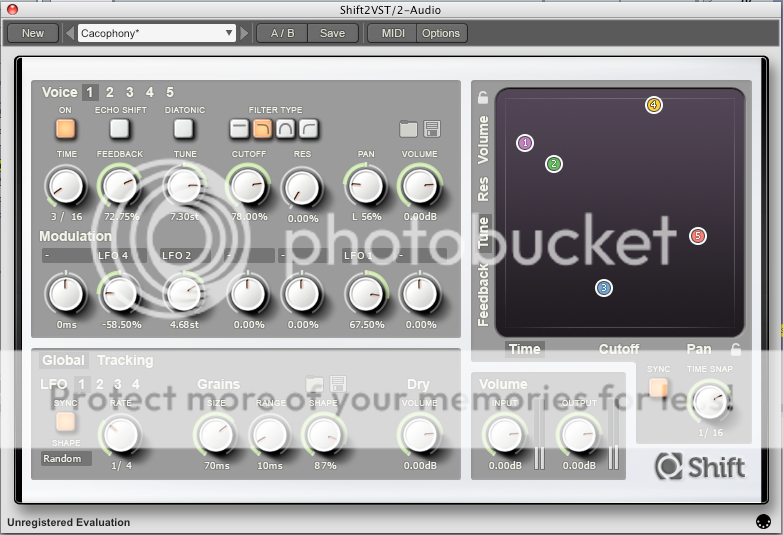Shift 2.2.0 is now available: download the evaluation demo or update here.
Shift is a diatonic granular pitch shifting delay. Shift combines an intuitive and beautiful user interface, with a great sounding granular synthesis engine. Shift's flexibility allows a palette of timbres ranging from basic echo effects, through intelligent harmonies, to exotic evolving ambient soundscapes.
Additions and improvements in Shift 2.2.0 include:
- Native 64-bit VST plug-in for Mac OS X (64-bit VST support requires Mac OS X 10.6 or greater; 64-bit Audio Unit requires Mac OS X 10.5 or greater; all other formats require Mac OS X 10.4 or greater.)
- Integrated undo and redo, with unlimited history size.
- Preset Browser is now maximized to fill the entire plug-in window.
- Windows RTAS plug-in is now installed to the correct location on 64-bit Windows operating systems.
- MIDI Program Changes are now multi-threaded, and so will no longer potentially stall the audio synthesis.
- Fix for crash (on both Windows and Linux) that could occur when 'space' is pressed when confirming the overwrite preset dialog.
- Fixed interface lock that could occur on Cubase for Mac OS X.
- Preset meta data (ie, author name, notes, tags) is now correctly displayed after loading an .FXP based preset or restoring a saved project.
- VU meters now automatically reset their overload status after a few seconds.
- For Windows VST (32-bit and 64-bit), the preferences file can be placed alongside the DLL file to facilitate USB or portable installs.
- Windows RTAS plug-in is now installed to the correct location on 64-bit Windows operating systems.
- Clearer font in PDF documentation.
- Fix for rare issue that stopped presets from loading in Linux Renoise when LADSPA plug-in support is enabled.
- Factory presets now load significantly faster.
Download Shift 2.2.0 here for Mac OS X, Windows, and Linux.




